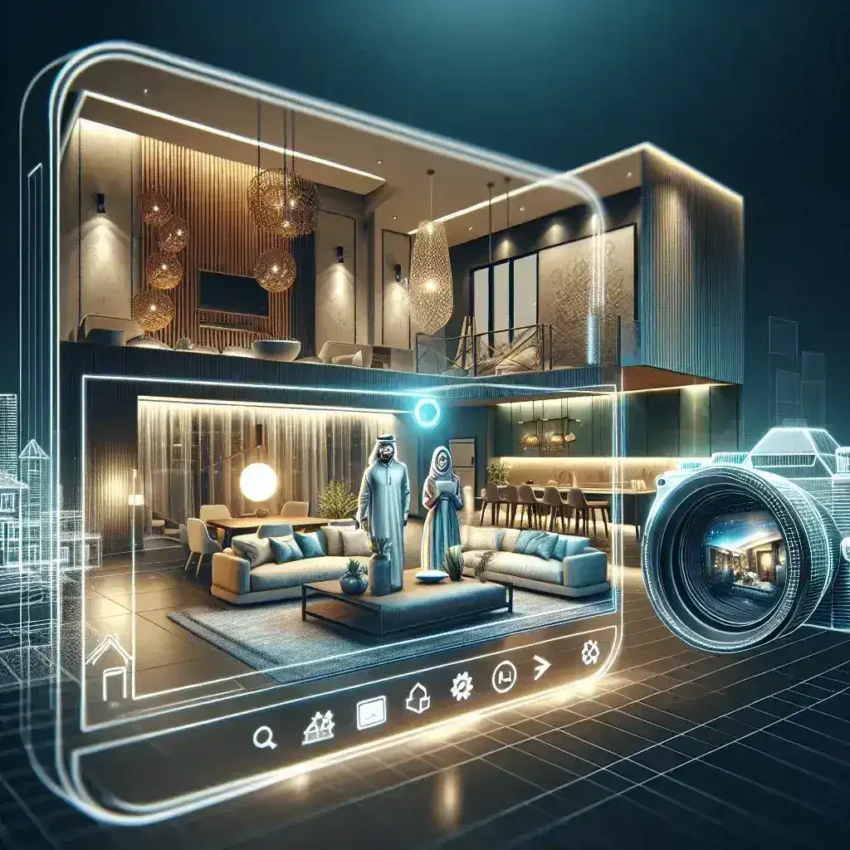In today’s digital-first real estate landscape, video tours have become an indispensable marketing tool that can make or break a property listing. With over 85% of buyers and sellers preferring to work with agents who utilize video marketing, understanding what to include in your real estate video tour is crucial for success. This comprehensive guide explores the essential elements that transform ordinary property videos into powerful sales tools.
The Foundation: Pre-Production Planning
Before rolling the camera, successful real estate professionals understand that exceptional video tours begin with meticulous planning. The foundation of any compelling property video lies in understanding your target audience and crafting a narrative that resonates with potential buyers’ aspirations and needs.
Property preparation stands as the cornerstone of effective video production. This involves staging the home to highlight its best features, ensuring optimal lighting conditions, and removing personal items that might distract viewers from envisioning themselves in the space. Professional real estate videographers recommend scheduling shoots during the golden hour when natural light creates warm, inviting atmospheres that make properties feel more welcoming.
Essential Equipment and Technical Considerations
The technical quality of your video tour directly impacts viewer engagement and property perception. High-definition cameras with stabilization features ensure smooth, professional footage that maintains viewer attention throughout the tour. Drone footage capabilities have revolutionized exterior property showcasing, providing breathtaking aerial perspectives that highlight neighborhood contexts, landscaping, and architectural details from unique vantage points.
Audio quality often receives insufficient attention, yet it significantly influences viewer experience. Professional-grade microphones and careful attention to ambient sound levels create immersive experiences that transport potential buyers into the property environment.
Structural Elements of Compelling Video Tours
Opening Sequence and Property Introduction
The first thirty seconds determine whether viewers continue watching or click away. Effective video tours begin with striking exterior shots that establish the property’s curb appeal and neighborhood context. Professional introductions should include essential property details: address, square footage, bedroom and bathroom counts, and unique selling propositions that differentiate the listing from competitors.
Creating emotional connections from the outset involves showcasing lifestyle elements that resonate with target demographics. For family-oriented properties, highlighting playground proximity or school districts; for luxury markets, emphasizing exclusive amenities or prestigious neighborhood associations.
Logical Flow and Room Progression
Successful video tours follow intuitive pathways that mirror natural visitor movement patterns. Beginning with common areas like living rooms and kitchens, then progressing to private spaces such as bedrooms and bathrooms, creates logical viewing experiences that feel natural and unforced.
Transition techniques between rooms should maintain viewer engagement while providing seamless navigation experiences. Professional videographers employ creative transitions like walking through doorways, following natural sight lines, or using architectural features to guide viewer attention toward upcoming spaces.
Key Areas and Features to Highlight
Kitchen and Living Spaces
Kitchens consistently rank among the most important factors in buyer decision-making processes. Effective video tours dedicate substantial time to showcasing kitchen features: appliance quality, counter space, storage solutions, and layout functionality. Close-up shots of premium appliances, custom cabinetry, and unique design elements help viewers appreciate craftsmanship and quality levels.
Living areas require careful attention to lighting and space perception. Wide-angle shots demonstrate room proportions while detailed footage highlights architectural features, flooring quality, and built-in amenities that add value to the property.
Bedrooms and Personal Spaces
Master bedrooms deserve special attention, particularly focusing on size, natural light, closet space, and en-suite bathroom connections. Privacy and comfort themes should permeate bedroom presentations, emphasizing retreat-like qualities that appeal to buyers seeking personal sanctuaries.
Secondary bedrooms require versatility demonstrations, showing potential uses as offices, guest rooms, or hobby spaces that accommodate diverse lifestyle needs.
Outdoor Spaces and Landscaping
Exterior spaces often provide the strongest emotional connections for potential buyers. Patios, decks, gardens, and swimming pools represent lifestyle enhancement opportunities that extend living spaces beyond interior boundaries. Seasonal considerations play crucial roles in outdoor space presentations, with spring and summer footage typically generating stronger buyer responses.
Advanced Techniques and Modern Innovations
Interactive Elements and Technology Integration
Modern real estate video tours increasingly incorporate interactive elements that enhance viewer engagement. Clickable hotspots providing additional information about specific features, virtual staging demonstrations, and 360-degree viewing capabilities create immersive experiences that traditional photography cannot match.
Augmented reality features allow potential buyers to visualize furniture placement, color scheme modifications, or renovation possibilities, making properties more appealing to buyers with specific vision requirements.
Neighborhood and Community Context
Successful video tours extend beyond property boundaries to showcase neighborhood amenities, transportation access, and community features. Local attractions such as parks, shopping centers, restaurants, and recreational facilities provide context that helps buyers envision their daily lives in the new location.
School district information, commute times to major employment centers, and proximity to healthcare facilities address practical considerations that influence buyer decisions beyond aesthetic property features.
Professional Production Standards
Lighting and Visual Quality
Lighting dramatically impacts property perception and buyer emotional responses. Natural light optimization involves scheduling shoots during optimal times and supplementing with professional lighting equipment when necessary. Avoiding harsh shadows, overexposed windows, and dark corners ensures every space appears inviting and well-maintained.
Color correction and post-production editing enhance visual appeal while maintaining realistic property representations. Professional-grade editing software allows for exposure balancing, color temperature adjustments, and minor imperfection corrections without misrepresenting property conditions.
Duration and Pacing Considerations
Optimal video tour lengths typically range between three to five minutes, balancing comprehensive property coverage with viewer attention spans. Pacing strategies should vary based on room importance and unique features, spending more time in key areas while maintaining momentum throughout the presentation.
Statistical analysis indicates that videos exceeding seven minutes experience significant viewer drop-off rates, while presentations under two minutes may appear rushed or incomplete.
Marketing Integration and Distribution Strategy
Platform Optimization
Different platforms require specific video formats and optimization strategies. Social media versions might emphasize shorter, highlight-focused content suitable for Instagram Stories or Facebook posts, while MLS listings benefit from comprehensive tours that provide detailed property walkthroughs.
YouTube optimization involves strategic keyword integration, compelling thumbnails, and detailed descriptions that improve search visibility and attract qualified viewers interested in specific property types or locations.
Call-to-Action Integration
Effective video tours conclude with clear, compelling calls-to-action that guide viewers toward next steps. Contact information should be prominently displayed, scheduling links for private showings readily accessible, and additional property resources easily obtainable.
Professional real estate agents often include virtual tour links, detailed property brochures, and neighborhood information packages that provide comprehensive resources for serious buyers.
Measuring Success and Continuous Improvement
Analytics and performance metrics provide valuable insights into video tour effectiveness. Engagement rates, viewing duration, and conversion tracking help real estate professionals refine their video marketing strategies and optimize future productions.
A/B testing different video styles, lengths, and presentation formats enables data-driven improvements that enhance marketing effectiveness and generate better results for property listings.
Future Trends and Emerging Technologies
The real estate video tour landscape continues evolving with technological advancement. Virtual reality integration promises even more immersive property experiences, while artificial intelligence-powered editing tools streamline production processes and reduce costs.
Live streaming capabilities enable real-time property tours that accommodate remote buyers and international investors, expanding market reach beyond geographical limitations.
Creating compelling real estate video tours requires careful attention to technical quality, strategic content planning, and understanding buyer psychology. By incorporating these essential elements and staying current with industry trends, real estate professionals can leverage video marketing to accelerate property sales and enhance client satisfaction in an increasingly competitive marketplace.

